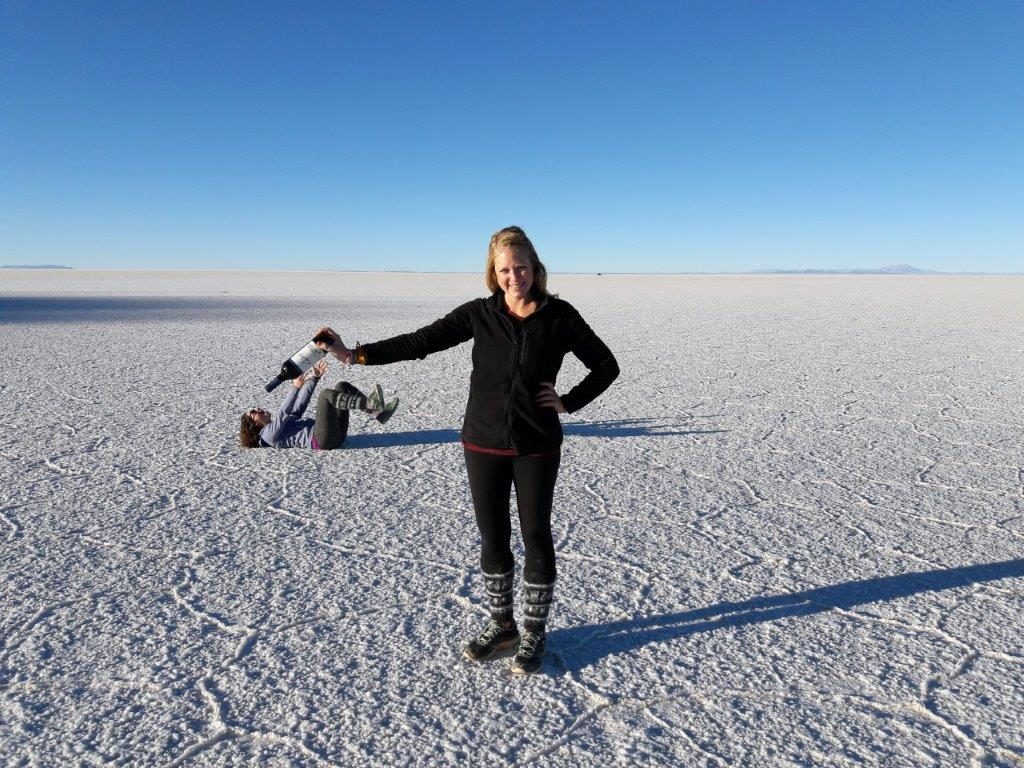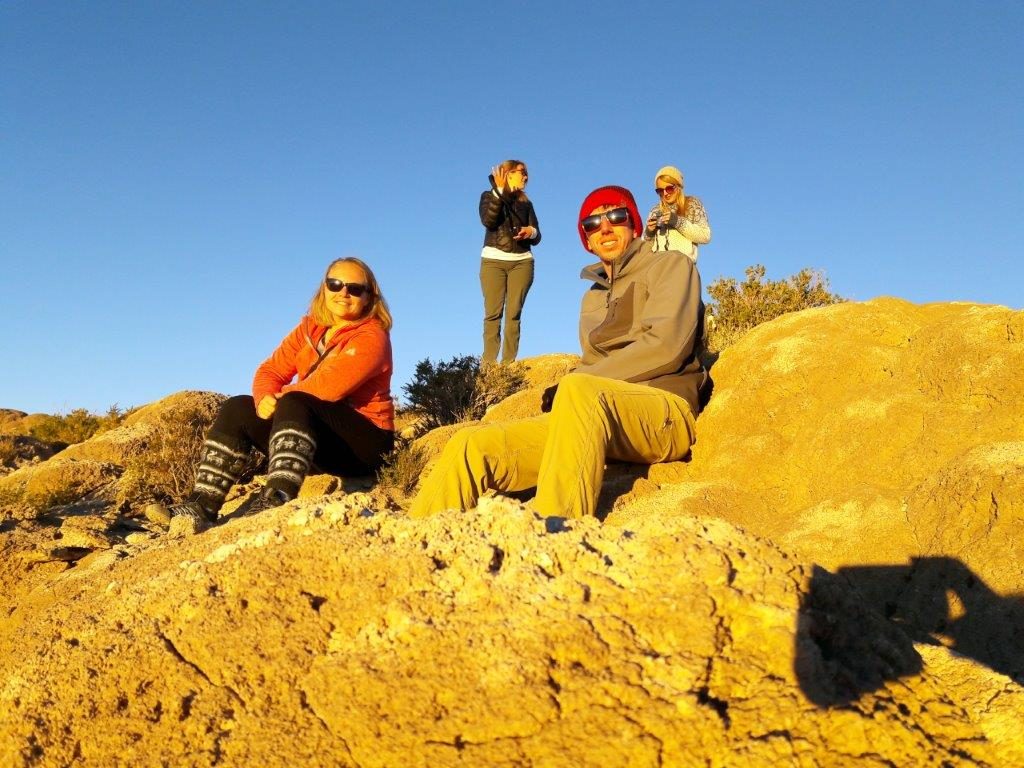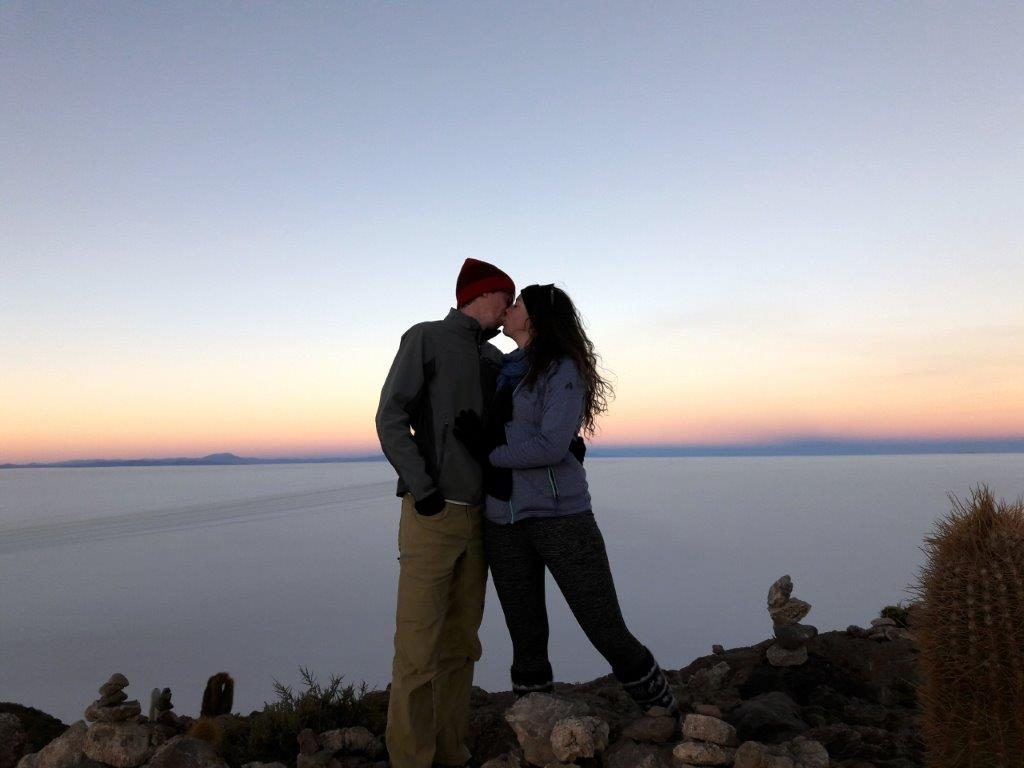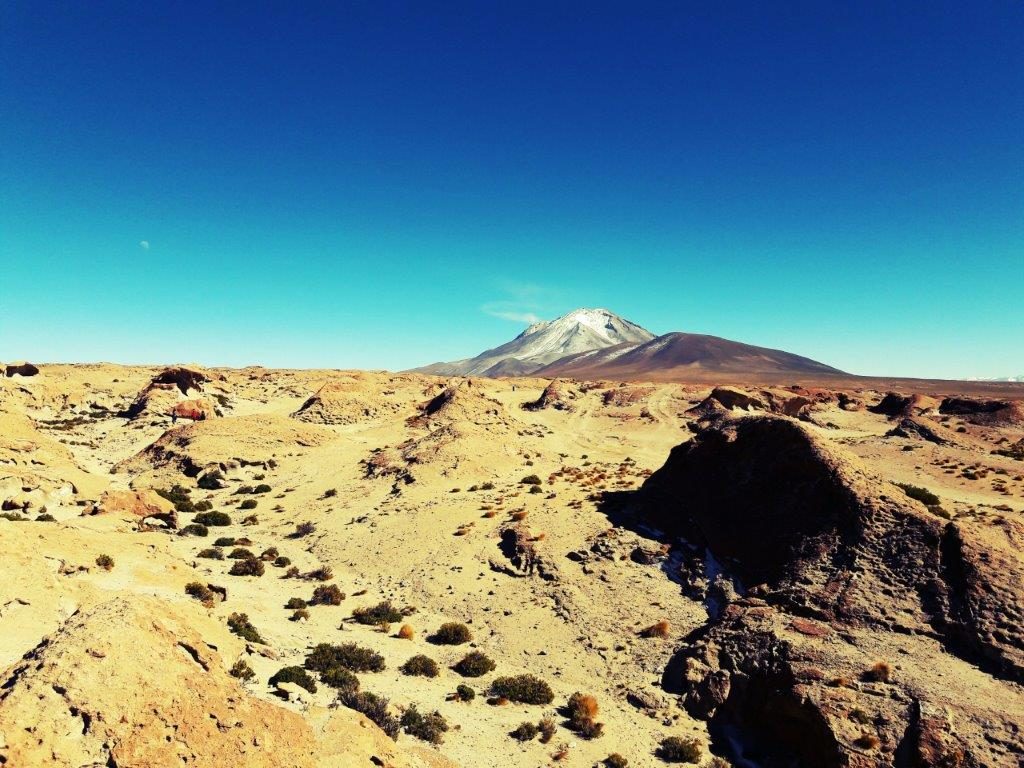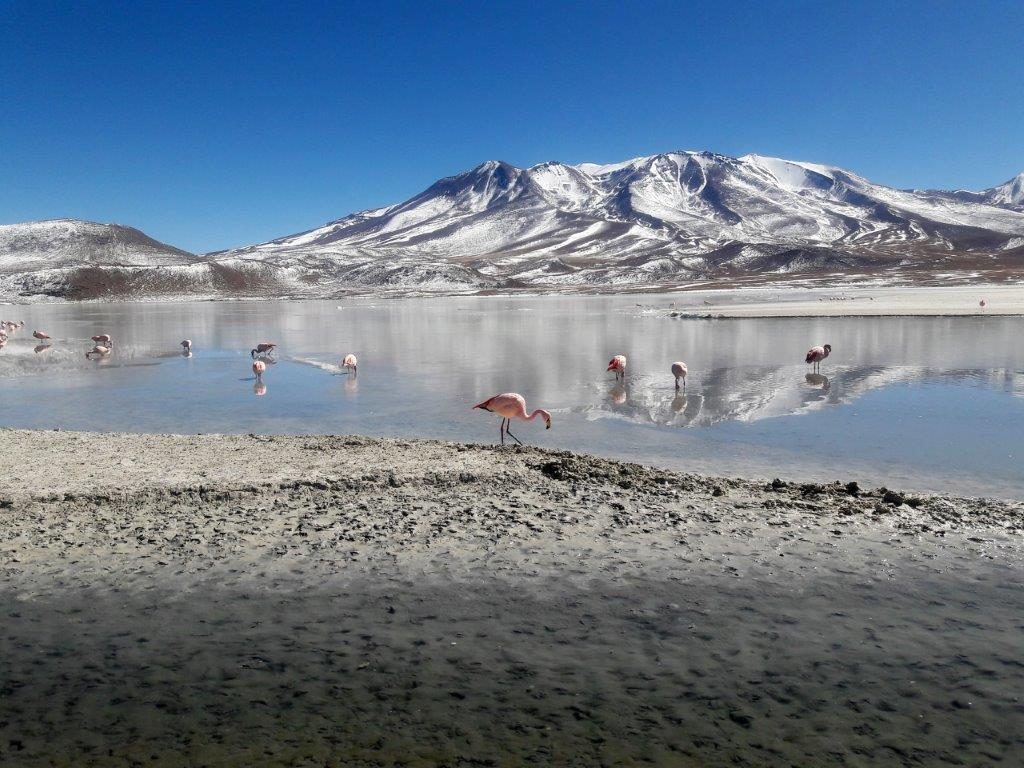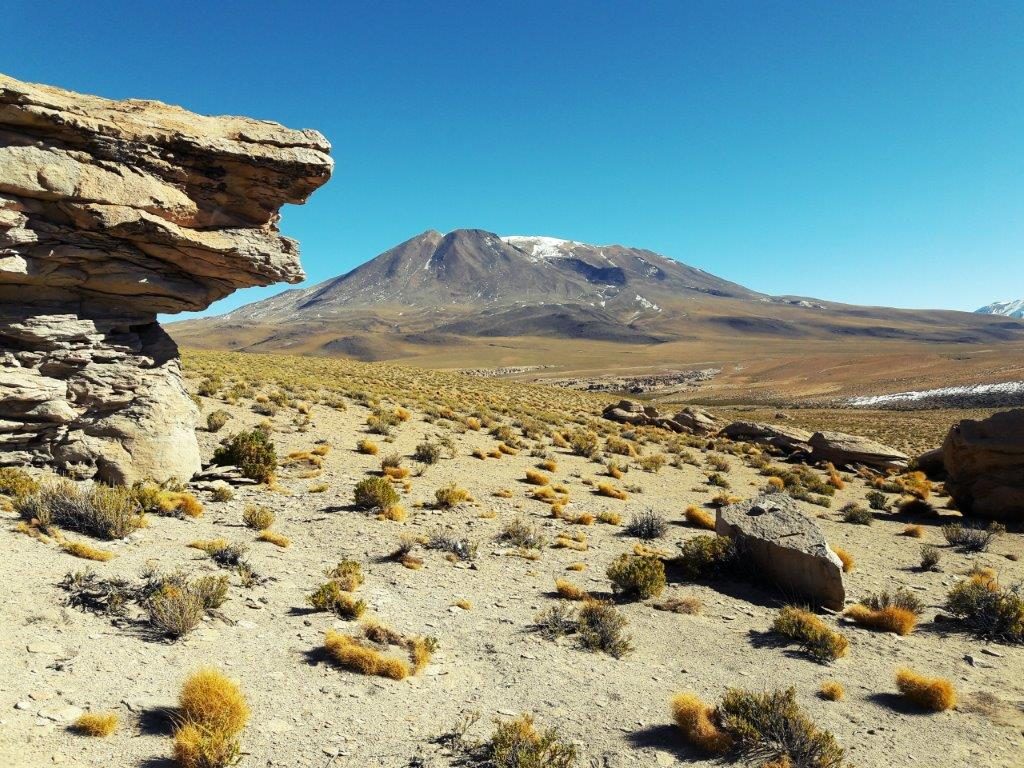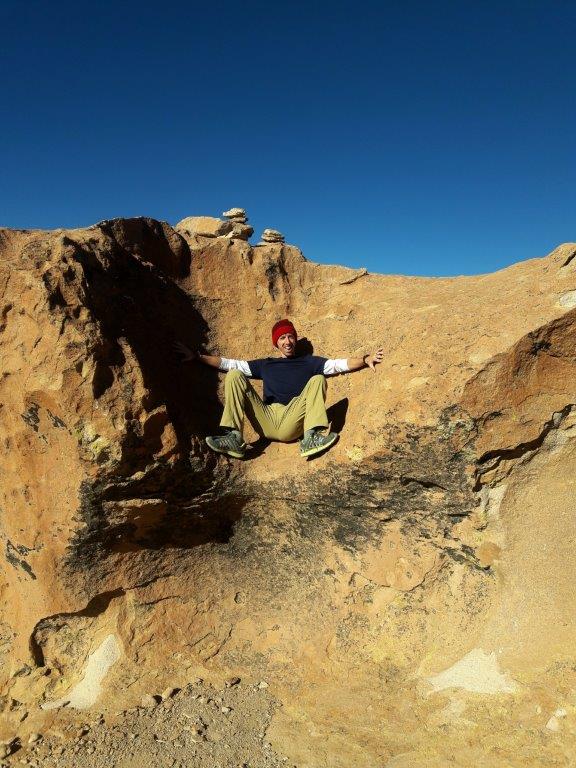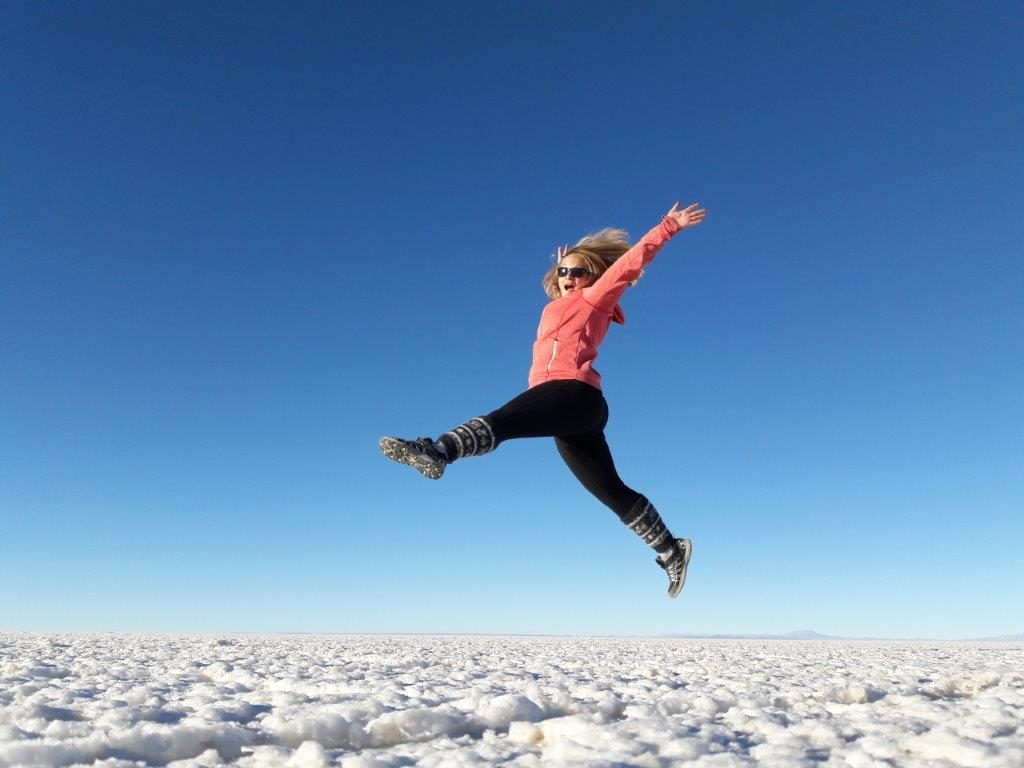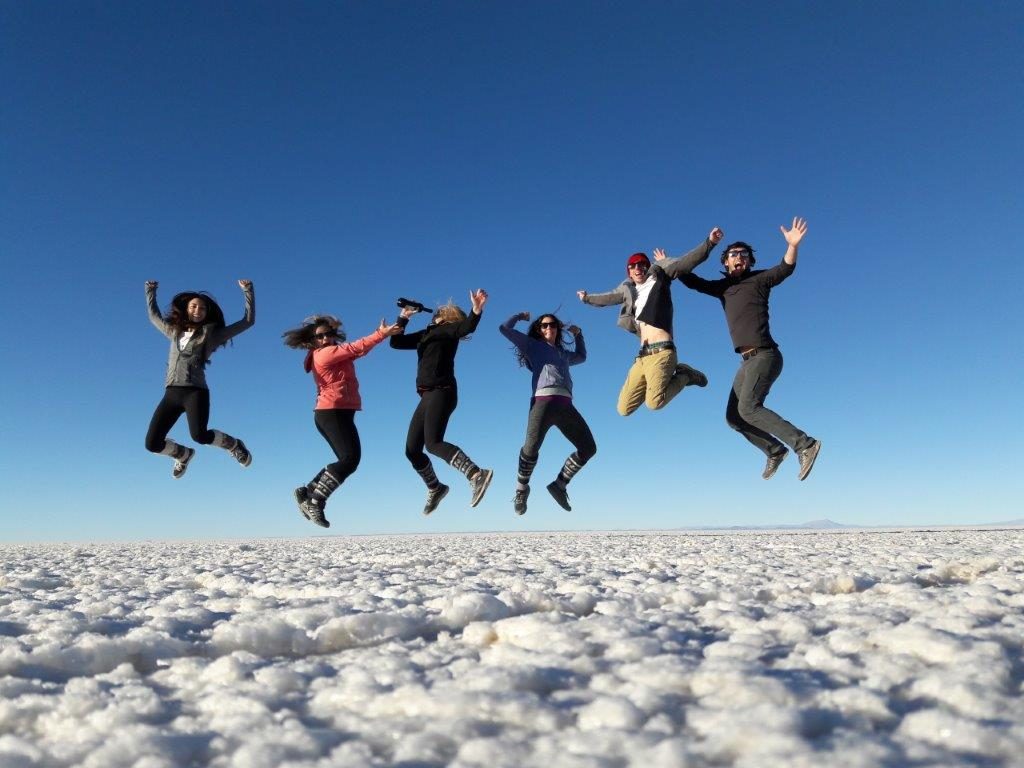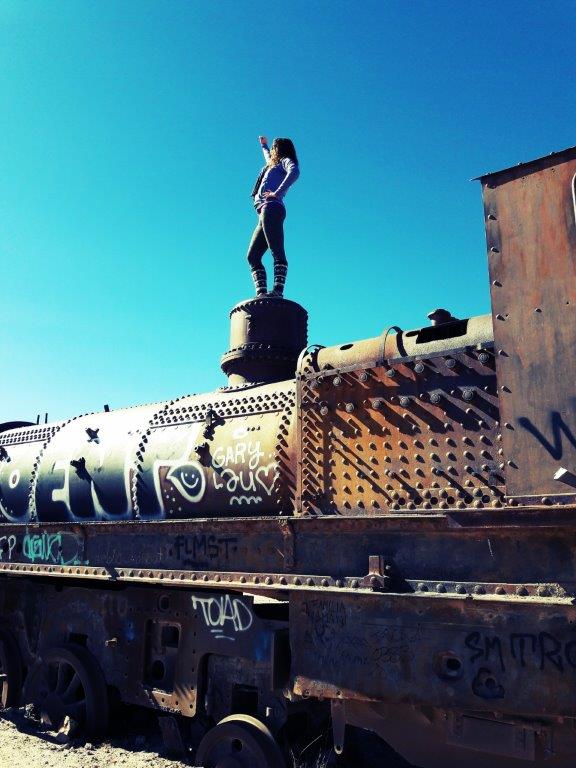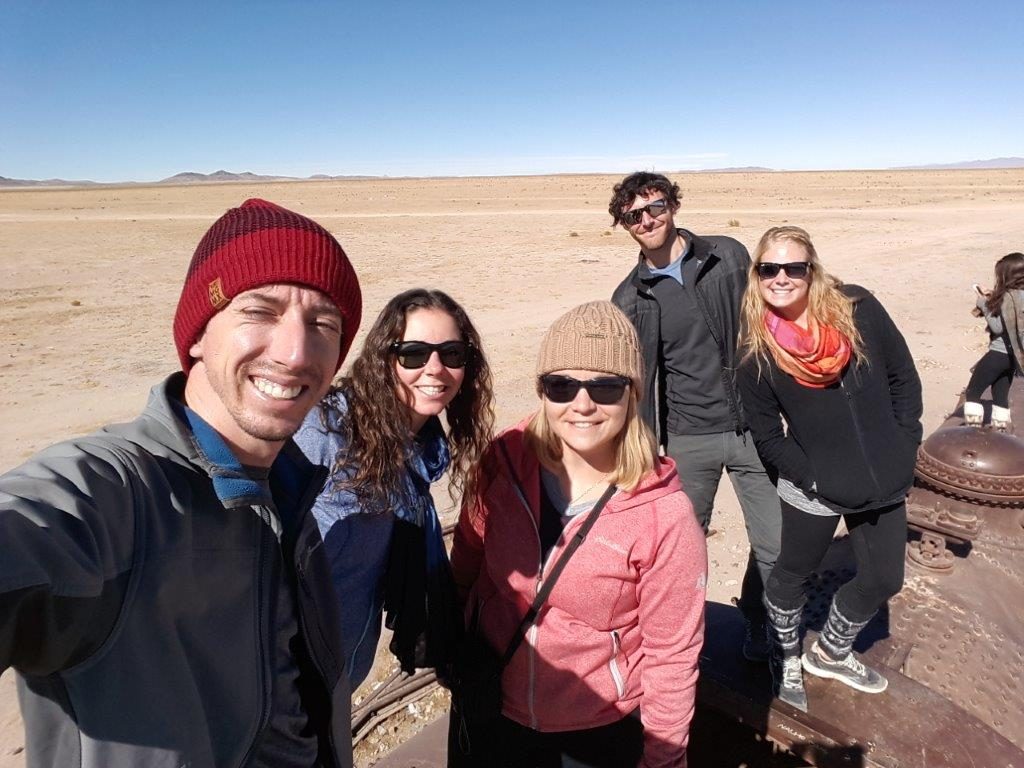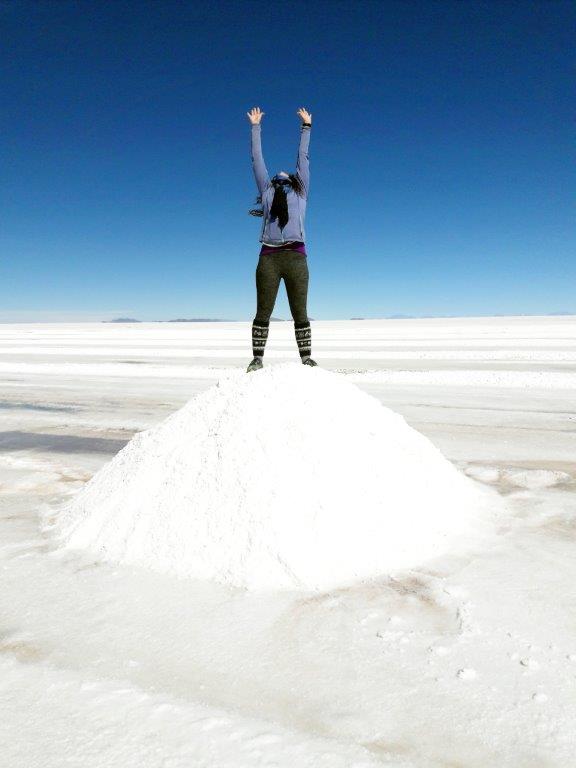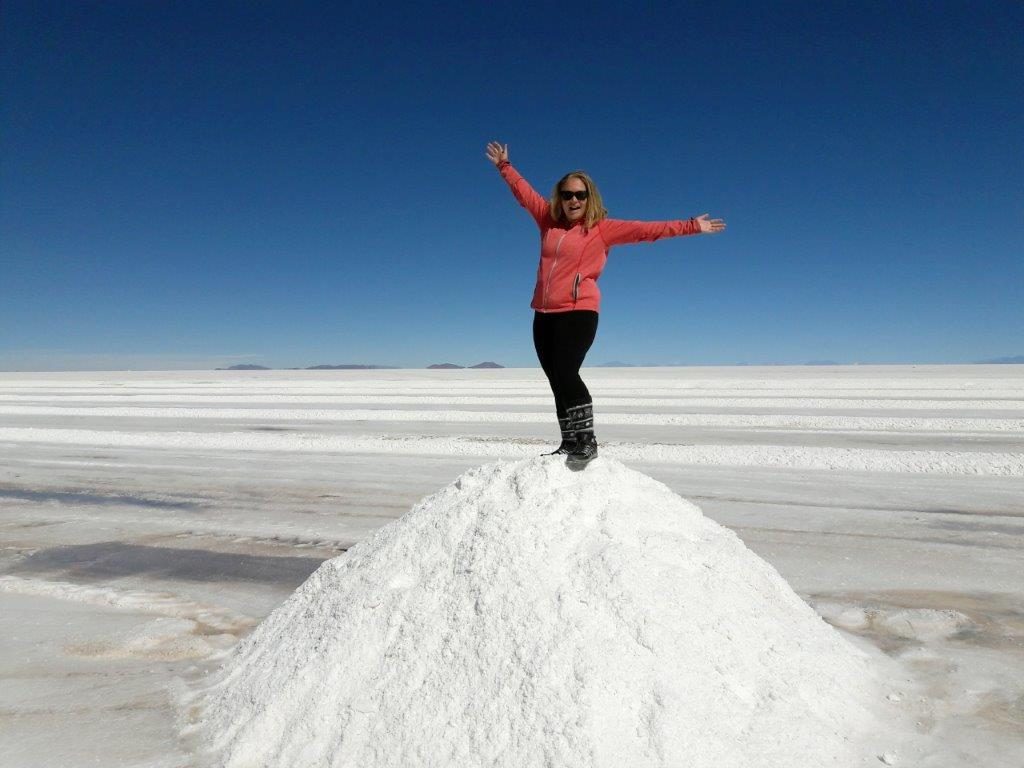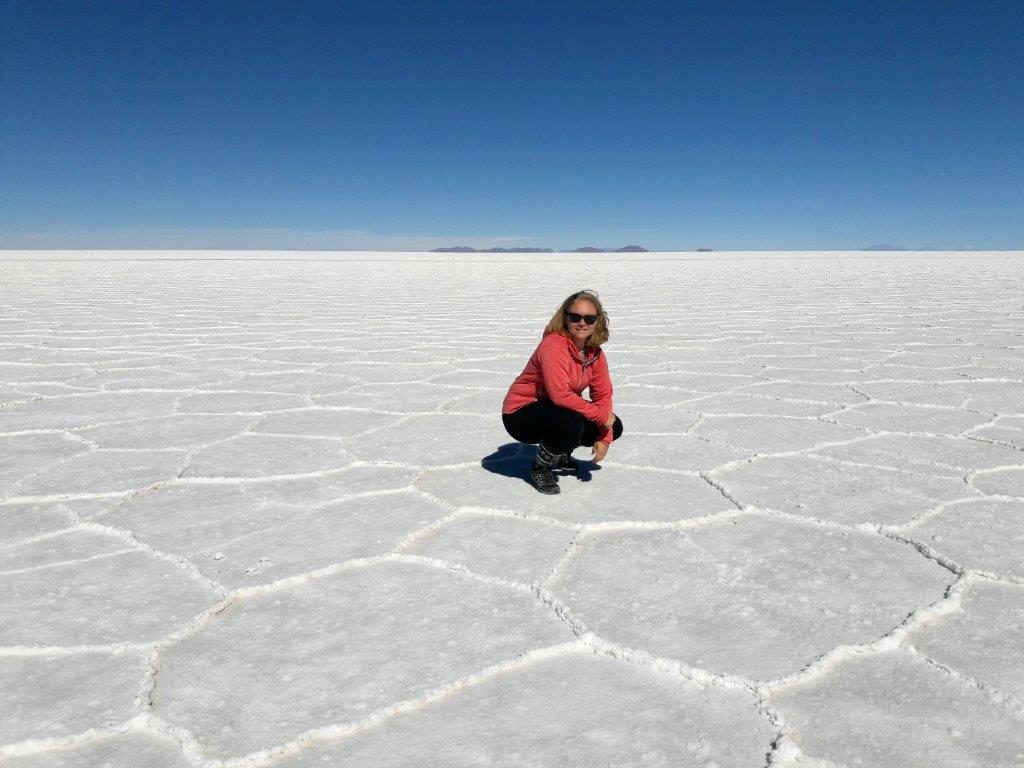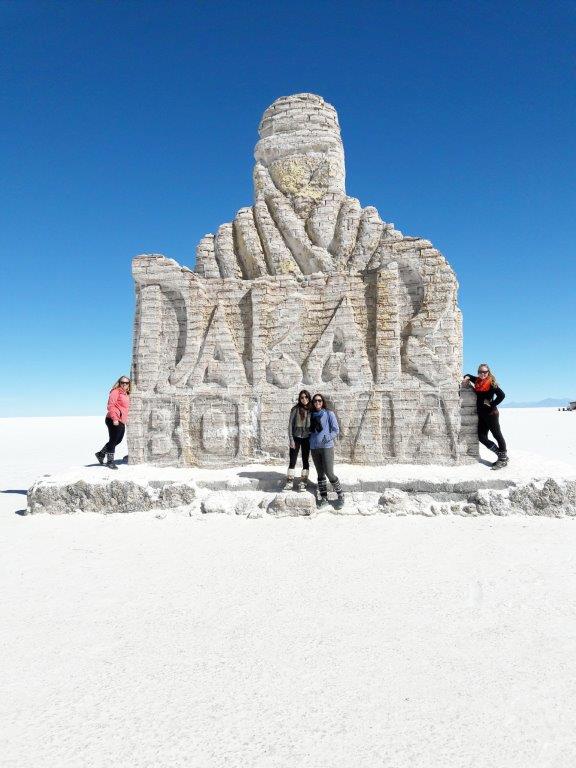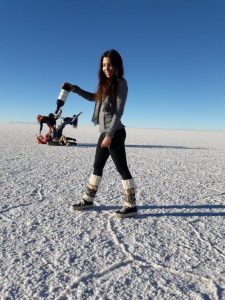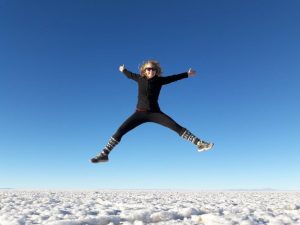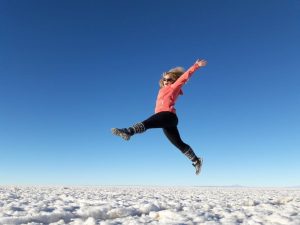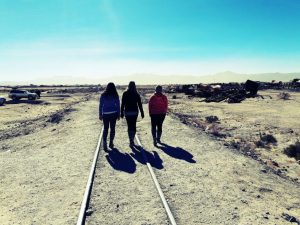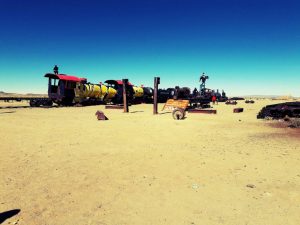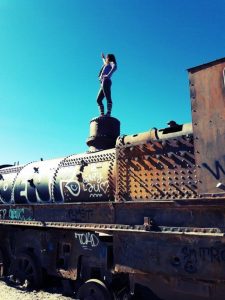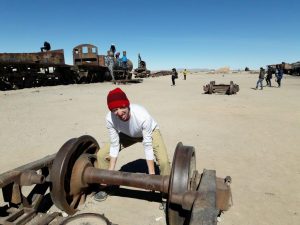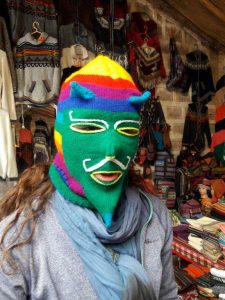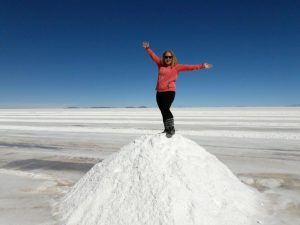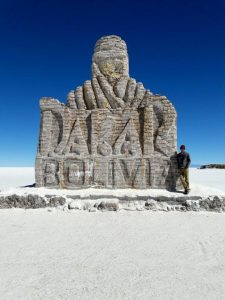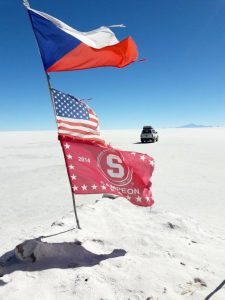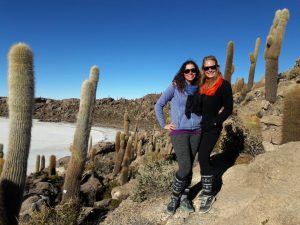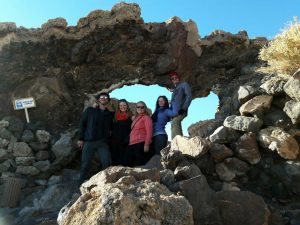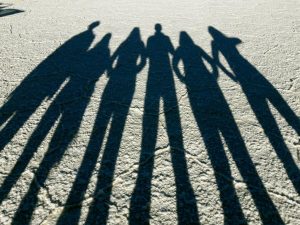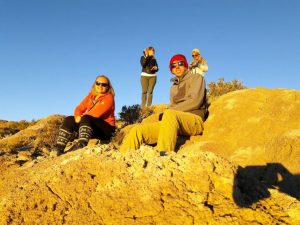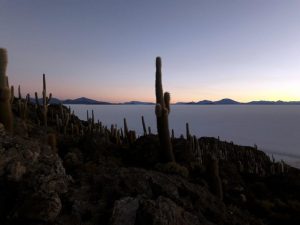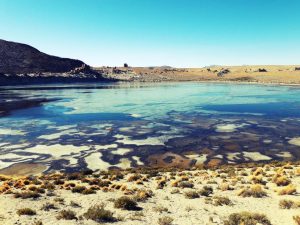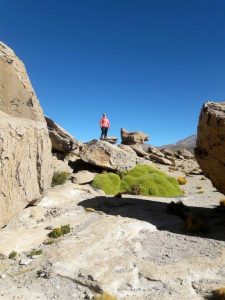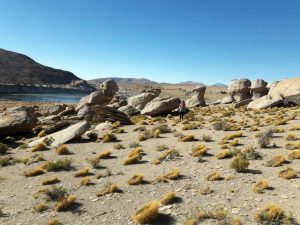Unimaginable Landscapes: Uyuni and the Salt Flats
Days 320-322 (June 13-15, 2017):
I know it may seem silly to do a post about just three days, one of which was spent entirely travelling, but this post is about one of my favorite places we visited all year. Additionally, I took so many pictures of it that I have deemed to be necessary to share, that there was little room for pictures of anywhere else. So, I am going to tell you about our first three days in the country of Bolivia, and specifically our tour of the areas surrounding the city of Uyuni and its AMAZING salt flats. I know I have written about salt flats before, even recently in the Atacama Desert in Chile. And while they were cool and worth seeing in their own right, they had nothing on the ones I am going to tell you about now.
Our first day, we had packed up and taken a bus to Calama to catch another bus bound for the Bolivian border. The horrible snowstorm had closed the pass that allowed you to cross straight from the desert so we had to find another way into the country that was at a lower elevation. Once at the border we waited in line for our bags to get searched with no issues. Adam even helped an older lady in traditional dress who had at least a dozen bags with her (god, I hope she was moving!) through the line. However, once we got to the immigration line, they told us we needed to proceed to a small trailer across the street to get our visas. We knew we would need visas for Bolivia, and we had read the US State Department’s website and a couple of travel blogs to make sure we had exactly what we would need. Well, turns out all those resources were wrong. When we began speaking with the officials there, we handed them our paperwork, showed them our itineraries, gave them our passports and passport photos, and held out $160 a piece to cover the visa fee (yes it is THAT steep!). They looked at what we had and asked us for paper copies of our passports. We were confused. Nowhere online had mentioned we would need copies of our passports. The border officers did not know what to do with us. They kept telling us we needed them and we just kept telling them we didn’t have them. One of the officers told us maybe we should go back to Calama and get them. We told them if that was the case we were not going to Bolivia and we would take our money for entry with us. They eventually agreed to take pictures of our passports with their phones and get them printed off later somewhere else. So, in the end, we did get our visas, but we did not make friends with our fellow bus-mates who waited the whole time on the bus for this issue to be resolved. And one more tip about crossing into Bolivia: make sure you have new, crisp bills. They would not take any of our twenties with so much as a microscopic tear in them or ones that had been creased too much. Luckily, we had brought some extra cash with us, but consider yourself warned.
We made it to Uyuni, checked into our hostel, and set out to book a tour to see the Salt Flats. We read online that there about a million agencies selling pretty much the same tours, so the best thing to do was to walk around to a bunch of them and play them off one another to get the best price. We were initially going to do a three day, two night tour, but the weather had blocked access to several of the lagoons further south and from what I read, if that is the case, the tour agencies don’t really replace those with other activities but simply drive around. So instead we opted for the two day, one night tour with Skyline tours (right by our hostel) for around $ per person. With that all settled, Katie, Smo, Adam, and I stopped at a small local place for delicious $4 steak and mashed potato dinners (Justin wasn’t feeling well) before returning to Hostel Oro Blanco to get some sleep.
The next morning we met our driver and picked up our fellow passenger Julieta before heading to the train graveyard. For about an hour we wandered around the old train cars, climbing atop them and snapping pictures while they rusted in their dusty forever home. It started getting a bit crowded, so we squished back into the car (once we were able to find it – I am telling you they all looked the same there), and headed for the main attraction: the Salar de Uyuni. The Salar de Uyuni is the world’s largest salt flats, covering over 4000 square miles, 100 times bigger than the salt flats in the United States. The salt is up to 460 feet thick and used the be at the bottom of a massive prehistoric tidal lake. Our first stop on the salt flats was at the salt mounds, where you can see how the salt in scraped into piles where it can dry and be harvested for use by the Bolivian people. We climbed on the mounds for a few photos, not all that impressed really. However, from there we headed out into the heart of the salt flats. On the way we were noticing how the salt forms these interesting tile formations on them and stopped to investigate. Apparently, the ridges of these “tiles” form from a chemical reaction when certain minerals seep up through the salt and become oxidized. We took some great shots of the large expanse of nothingness before forging on. Our driver dropped us off a little ways away from a visitor center/hotel where we were going to be having lunch. We were able to walk past the giant salt-made sign for the Dakar Rally – Adam was particularly excited about this since it is a massive round the world car race thing he knew of. We also walked past a platform on the salt that where flags of various nations were displayed by visitors to the site. We found the American flag and got a few pics before feasting on a lunch of pork chops and fresh veggies.
After lunch we made our way to my favorite spot: Incahuasi Island. It is a big rock island jutting up out of the pure-white salt covered in giant cacti. We did a short hike around the island and to the peak, taking in the incredible views. And let me tell you, the landscape you see from the top of that cactus-covered island is unlike anything I had seen anywhere on Earth. It was one of my favorite spots on our entire trip. We lingered here a bit longer, making our guide ensure us we could return and then went out into the flats once again. This time, we were going to have a photoshoot. The Salar is so flat and white, it is ideal for doing funny pictures and the guides know all the tricks. They can make it look like you are being chased by a dinosaur, dancing atop a bottle of wine, of disappearing into a Pringles can. We got some really goofy, really funny stuff out there and had a good time trying out different poses. When the sun was sinking down, we returned to Incahuasi Island, made a beeline for the top (which was a lot tougher than I thought it would be) and find a good spot. We watched the sun set over the Salar, the colors changing the white slat to shades of purple, pink, and orange. It was amazing.
We got back in the car and drove to the edge of the salt flats. I was impressed our guide/driver could find the way considering there are no roads or trails out there, just white flat ground. But he knew it well, and took us to our lodging for the evening; a hostel made of salt. The walls, floor, and roof were all constructed using salt blocks straight from the flats. We settled into our salt rooms, ate dinner, drank a bit of wine, and waited for it to get dark. That night we were going stargazing. There is very little human activity even anywhere near the flats, so there was no light pollution to be found. We drove straight out for about 20 minutes into the middle of the Salar. Then, we wrapped ourselves in blankets and got out of the car, faces upturned to the sky. The stars were brilliant. And I mean that. It may have been the best star gazing I have ever done, and earlier in the year we had gotten a chance to do it in the dark stillness of the Sahara Desert. You could see literally thousands of stars as well as the Milky Way. It was so dark and so flat, the curvature of the earth made it feel as if the sky had no end. You could not tell where the stars ended and the world began. We saw countless shooting stars whizz past us and had fun running into the blackness around us. It was an unreal experience.
The next day, we were up by five a.m., ready to go out and see the sunrise over the Salar. We drove out and watched the colors over the salt change with the ascending sun. We got a few more final shots of the salt flats before leaving them and heading south. Our first stop was at a railroad crossing in a valley surrounded by volcanoes called Ollague. We stopped there briefly to take pictures. We met up with another tour group who were having car trouble, and helped them along the way. Our next stop was at a viewpoint for an active volcano. The boys went off to climb some of the large boulders and the girls took the opportunity to soak up some sun. We even found a Scottish guy there wearing a Harambe t-shirt (if you fellow Cincinnati people can believe how far that bit of infamy extended).
We got back in the car and headed for our lunch stop, the first of three lagunas (lakes) we would be visiting that day. The first one was by far the most impressive and was called Laguna Hedionda. It was stunning. It was a shallower laguna surrounded by snowcapped mountain peaks and filled with, if you can believe it, bright pink flamingoes. Apparently these lagunas in Bolivia serve as a home and breeding ground for thousands of flamingoes of varying species. We watched them feasting on tiny plankton and got some great pictures of the mountains reflected in the clear, still water. We ate lunch overlooking the incredible view, again affirming why we chose to travel. Our next laguna was the Laguna Canapa, just in front of the previous laguna. It was also beautiful, but we did not stay at this one long; just got some pictures and took in the sight before getting back in the car. Our last laguna was a little farther away and was called Laguna Negra. Here we had a lot of fun climbing around of the boulders and unique rock formations. The area was also home to some interesting flora and fauna including weird creatures called Bolivian vizcacha, which are actually a species of Chinchilla that look similar to rabbits. We watched them race across the rocks, fleeing the prying eyes of their human visitors. We also came across a really strange plant called yareta (llareta), which is a type of evergreen that is made up of very tightly compacted leaf-like structures that grow in dense mats over boulders. Because of how and where they grow, they resemble vivid green blobs and they look rather squishy from a distance. However, further inspection revealed that they are in fact very hard and covered in their own sap-like secretion. Weirdest plant I had seen in a while. So, we explored the area a bit more before getting in the car and taking a break at our final stop, the Desert of Siloli. The desert is known as the forest of rocks and known for its crazy formations caused by thousands of years of wind erosion. We took our final shots for the tour before hitting the road back to Uyuni, happy and exhausted. We briefly stopped on the side of the road to refuel, and chase llamas. A tip on chasing llamas: our experience found that you have a better shot of getting close to llamas if run at them making weird screaming noises and waving your hands around wildly in the air. When we tried to walk towards them calmly, they walked away from us almost step for step, not wanting us to be any closer to them. However, when you go after them like a mad woman, they appear to get so confused by your odd behavior that they do not move at all. Seriously, as I was running towards them I was getting so close I was concerned I was going to have to push one out of my way. So there you go. Anyways……the tour had been a major highlight of our trip and I would recommend it to anyone. The landscapes there are stunning, ethereal, and one-of-a-kind.
Once we got back, we got some dinner in town and bought our bus tickets north. We were now ready for some R&R in the lake-side town of Copacabana.
Pictures
















